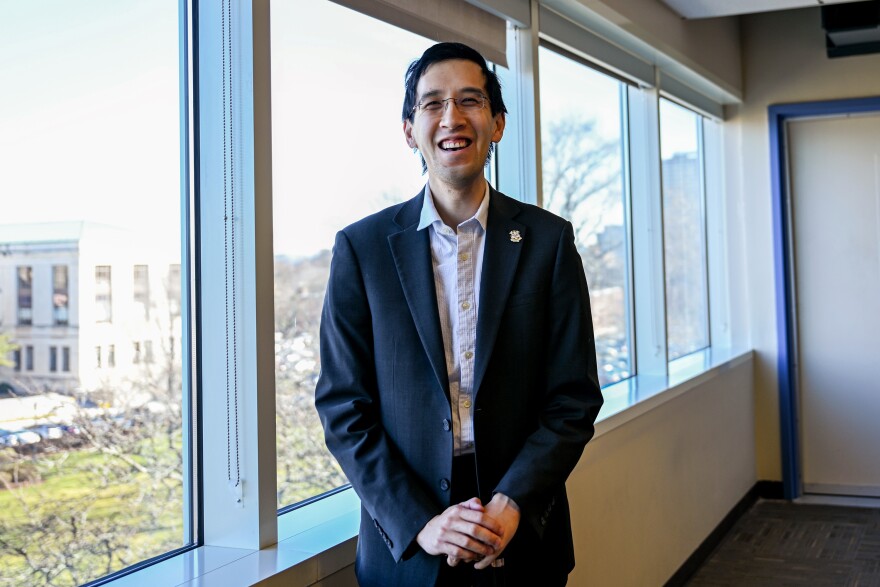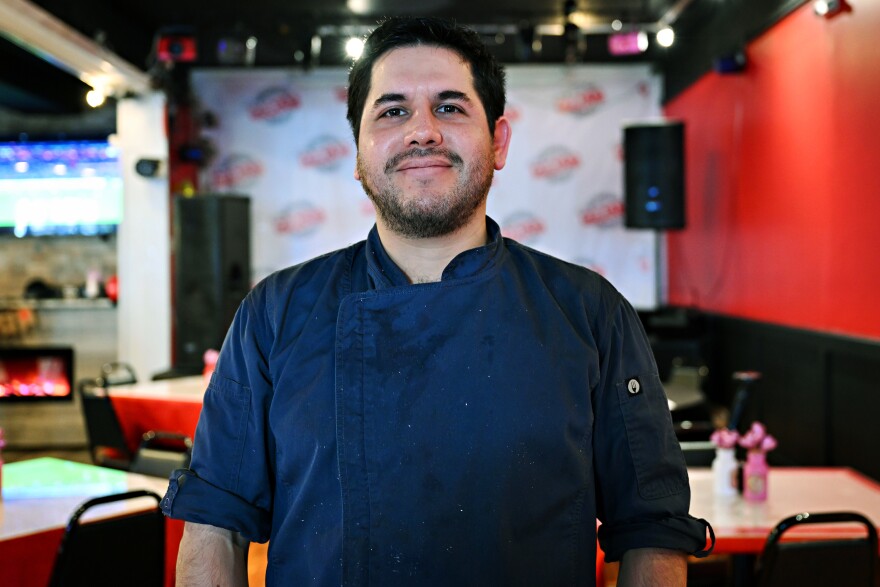The Lunar New Year marks a two-week period of reflection and celebration, highlighting the cultural diversity that enriches Connecticut communities. A local community of Asian Latinos exemplifies cultural fusion and a history of resilience, blending their stories and traditions from Hispanic and Chinese heritage. This blending of cultures has created a unique cultural identity, where Chinese influences enrich Hispanic customs, forming a vibrant tapestry of traditions.
Dr. Rocio Chang, originally from Peru, is a psychologist at the University of Connecticut School of Medicine. She reflects on the profound influence of her Peruvian and Chinese roots. Growing up in Peru, Dr. Chang's upbringing was imbued with the flavors and customs of both cultures, instilling in her a deep sense of pride and connection.

“I'm very proud of being Peruvian, and I'm very proud to have Chinese roots. My grandfather immigrated to Peru after the First World War,” Dr. Chang said. “He never went back to China, and my father was very proud of his Chinese heritage, and through food, we were able to celebrate and honor our Chinese culture.”
As a Peru-Asian, Dr. Chang remains steadfast in her commitment to promoting understanding and unity, actively engaging in initiatives to address discrimination and foster inclusivity.
“I have colleagues who are part of many different movements,” she said. “We are providing information, and also we are asking the students to talk about their experiences being Asian Americans and also learn more about Asian American history.”
Dr. Chang is a member of an underrepresented group of about 300,000 Asian Latinos in the country. Recent 2021 U.S. Census Bureau data reveals how Hispanics self-report their racial identity. Among single-race Hispanics, less than 1% identified as Asian Latinos.
Feet in two worlds

Connecticut native Alan Tan, Co-Chairperson of the State's Commission on Women, Children, Seniors, Equity, and Opportunity, shares his story of resilience and determination as an Asian-American. While Tan is not of Hispanic descent, he faced discrimination in his youth as a boy of Chinese descent born and raised in Connecticut, which was a deeply upsetting experience.
“There was actually a time in kindergarten where a bunch of kids stuck my head out of the bus window and tried to raise the window because I was different. And that's just not right. So that was some of the things that I had to deal with growing up,” Tan said. “And then in Chinese school, I didn't really fit in there either because in the Chinese community, I wasn't really [from] the mainland.”
However, Tan remained proud of his roots, and his unwavering dedication to celebrating his Chinese heritage is a beacon of inspiration for others.
“Growing up, we did celebrate the Lunar New Year. So every year the Chinese community in Connecticut, they would come together and celebrate that tradition continues. They would obviously do a Lion Dance dragon dance,” he said.
“They had the demonstrations of different aspects of Chinese dance and culture.”
Today, the largest Asian American ethnic groups in Connecticut include Asian Indian, Chinese, and Filipino, according to an AAPI Vote report. These communities are most prominent in Fairfield, Hartford, and New Haven. This year the Lunar Year, Year of the Dragon, began on February 10 with Lion Dragon dances and Parades in cities like New Haven and across the state. Traditionally, celebrations end 15 days later, with a Lantern Festival on February 25.
Through participation in Lunar New Year festivities and engagement in traditional activities, Tan underscores the importance of unity and advocacy in building a more inclusive society.
Cross-cultural influences in food and history

Chef Italo Napurí, originally from Lima, Peru, is not of Asian heritage, but as a chef, he embodies the fusion of Peruvian and Asian cuisine. His creations at Piolin at Franklin in Hartford showcase the harmonious integration of flavors and techniques passed down through generations.
“The Peruvians befriended the Chinese and hired them to work in restaurants. The Chinese shared their cooking techniques, such as the use of the wok,” Napurí said. “As a result, the two cultures embraced each other.”
While Asian-Latino cultural influence is celebrated today through food and shared customs, the history of Chinese immigration to Peru began with a darker story. After Peru abolished slavery in 1854, the country brought in more than 100,000 Chinese indentured laborers between 1849 and 1874 to stabilize the economy. Working on plantations for the sugar and cotton industries, Chinese immigrants faced physical abuse, mistreatment, and racism. According to Brown Center for Latin American Studies, Chinese laborers who were able to complete their contracts went on to work as artisans, merchants or domestic servants and eventually started families with Peruvians.
With a deep appreciation for the cultural exchange between Peru and China and a passion for culinary arts, Chef Napurí's dishes pay homage to both nations' shared history and gastronomic legacy. His culinary repertoire exemplifies the fusion of two distinct culinary traditions, including dishes like "Arroz Chaufa," Tallarin Saltado, Pollo Chi Jau Kay, and many more Peruvian-Chinese fusions.
“In ancient times, the Chinese would gather to eat, but certain ingredients connected Peruvian and Chinese culture, including rice,” Napurí said. “The Chinese would say ‘fried rice’ in their language, but the Peruvian understood it as ‘chaufa,’ and from there, the dish was born.”
These culinary delights, now available in every Peruvian restaurant in Connecticut, are a testament to the centuries of diversity that have influenced Peruvians, who are now part of the state's diverse population.
Dr. Chang and Tan hope every community embraces the spirit of cultural diversity and unity that defines the Lunar New Year by sharing traditional dishes, participating in festive celebrations, and advocating for social justice.





